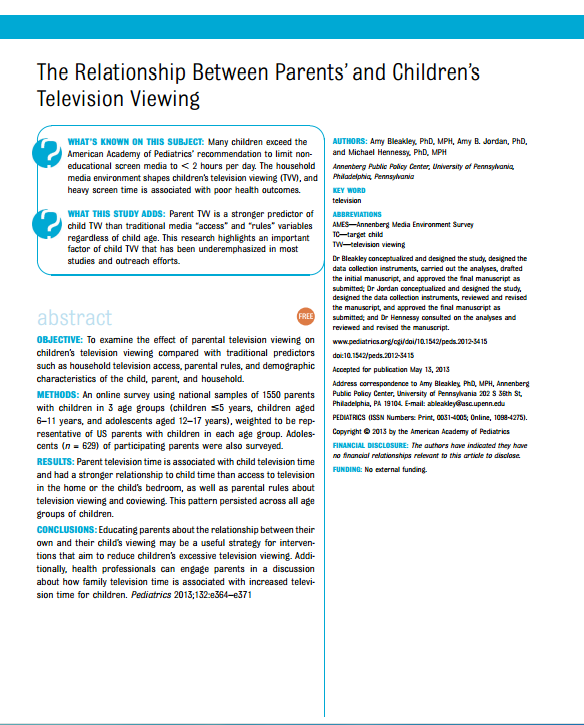Abstract:
OBJECTIVE: To examine the effect of parental television viewing on children’s television viewing compared with traditional predictors such as household television access, parental rules, and demographic characteristics of the child, parent, and household.
METHODS: An online survey using national samples of 1550 parents with children in 3 age groups (children ≤5 years, children aged 6–11 years, and adolescents aged 12–17 years), weighted to be representative of US parents with children in each age group. Adolescents (n = 629) of participating parents were also surveyed.
RESULTS: Parent television time is associated with child television time and had a stronger relationship to child time than access to television in the home or the child’s bedroom, as well as parental rules about television viewing and coviewing. This pattern persisted across all age groups of children.
CONCLUSIONS: Educating parents about the relationship between their own and their child’s viewing may be a useful strategy for interventions that aim to reduce children’s excessive television viewing. Additionally, health professionals can engage parents in a discussion about how family television time is associated with increased television time for children.
Authors
- Amy Bleakley
- Michael Hennessy
- Amy Jordan


